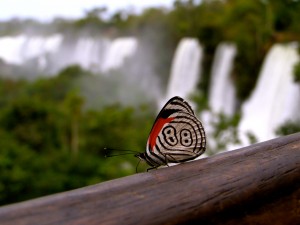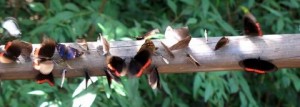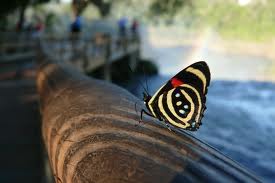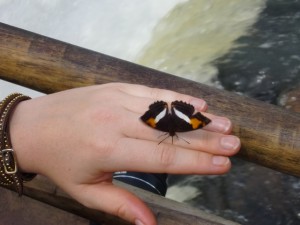 The observation of butterflies in their natural environment requires a good deal of practice and patience. Since butterflies are biological indicators , learn from them can help us better understand the ecology of the Misiones rainforest preservation and appreciation .
The observation of butterflies in their natural environment requires a good deal of practice and patience. Since butterflies are biological indicators , learn from them can help us better understand the ecology of the Misiones rainforest preservation and appreciation .
In the province of Misiones are very conspicuous and does not take much effort to find them , unless environmental conditions are appropriate. If the temperature and humidity are high and the day is sunny , it is the ideal time . If it is warm but cloudy surely be lesser activity as on a sunny day .
The cold rainy days almost no butterflies , like the days or months with drought , or when the temperature exceeds 40 ° C.
The best times to find them are the hottest hours of the day, from 10 am to 16 pm , while the early hours of the morning may be better to try to photograph them.
 There are a few species that are easier to see at dawn or dusk ( like the butterfly owl ) , but can also be found in shady places during the day. We can find them all year but September to May find greater number of species and individuals , with a peak in the summer months. After a rain and when the temperature rises again observed greater number of copies that may emerge from cocoons with moisture.
There are a few species that are easier to see at dawn or dusk ( like the butterfly owl ) , but can also be found in shady places during the day. We can find them all year but September to May find greater number of species and individuals , with a peak in the summer months. After a rain and when the temperature rises again observed greater number of copies that may emerge from cocoons with moisture.
Butterflies add some 170,000 species worldwide , of which only about 10% are diurnal . They form within the insect order Lepidoptera , only outnumbered by the Coleoptera (beetles ) . In our country almost 1,300 species are known diurnal and nocturnal are estimated to number several thousand . The butterfly fauna is diverse in Misiones jungle , home to three quarters of those species in Argentina .
Recommendations to contemplate and know them :
 – The best places to find them are in forest edges or clearings where there is enough sunlight although there are many understory species rarely find outside of the jungle.
– The best places to find them are in forest edges or clearings where there is enough sunlight although there are many understory species rarely find outside of the jungle.
– Certain species of flowers are good places where you can see butterflies even though many do not feed on nectar and attend only animal dung , rotting fruit and tree sap exudates .
– Once you have found the species should be approached as slowly as possible without making sudden movements and especially not to cover the butterfly with our shadow .
– If possible take picture of both faces of the specimen.
– It is very helpful to write in the book all aspects that may be relevant such as time, date , time , temperature, location , species attempt behavior , flowers or plant where it sits , etc. .
 – The data can be of great help to identify the butterfly later if it was possible to identify the place of discovery . It should begin to familiarize yourself with the families and subfamilies.
– The data can be of great help to identify the butterfly later if it was possible to identify the place of discovery . It should begin to familiarize yourself with the families and subfamilies.
– It is better to go first to a place closer to our home to go to the jungle , where there are many more species and more difficult to recognize .



